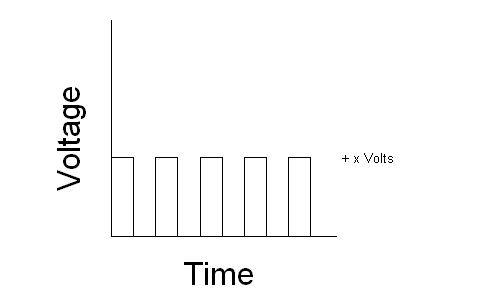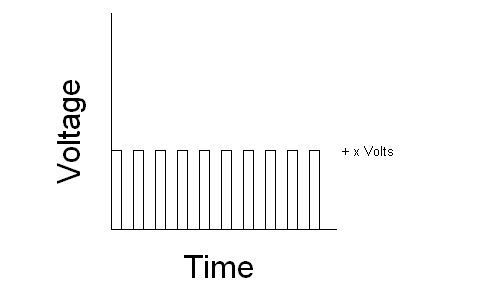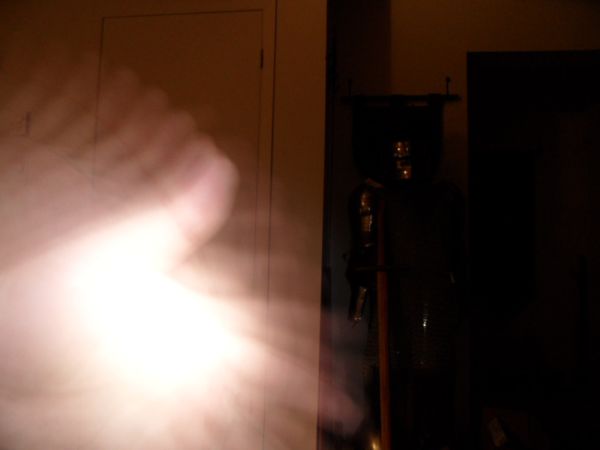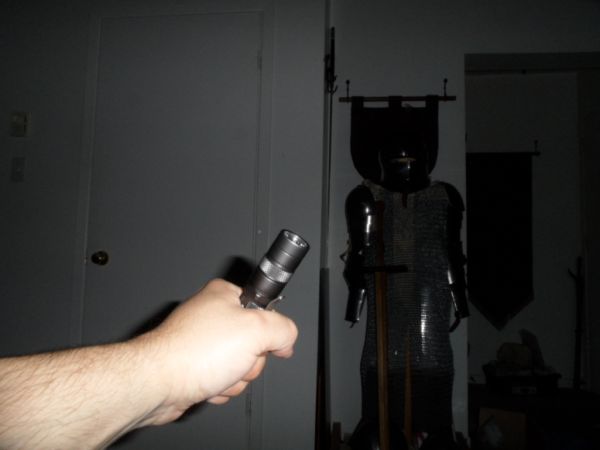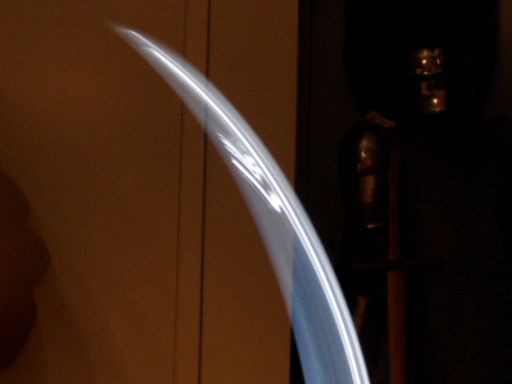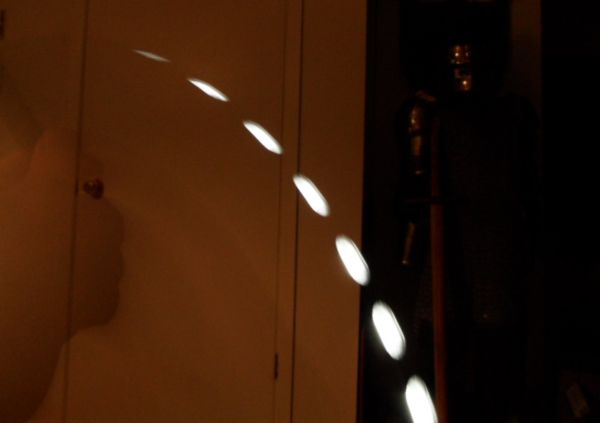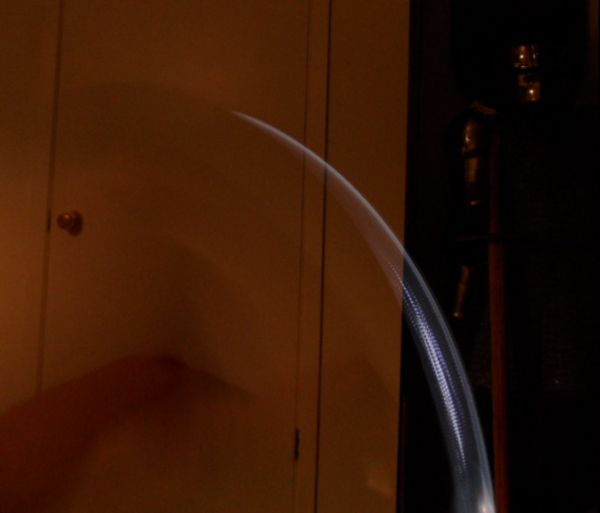Great thread! Spreading PWM awareness is a good thing.
Trying to find info on LED flicker or PWM – The searches bring up a lot of info aimed at gamers and LED refresh rates. These (I think) are not really applicable to flashlight LEDs.
While researching this I can across this article in Nature:
"Humans perceive flicker artifacts at 500Hz"
https://www.nature.com/articles/srep07861
Interesting reading - And the reference section sends one down a rabbit hole of other studies.
On another note, some time ago a study found that some air force pilots could identify the type of aircraft from an image flashed on a black screen for 1/250 of a second.
I have seen other references to this, so I assume it's a real fact as opposed to an internet fact.
Detecting PWM by Ear
Most flashlight PWM takes place in the audio frequencies.
A novel way to detect (some) PWM is to hook a PV cell (Solar cell) to a speaker.
Or better still the input of an old powered computer speaker.
If someone has mentioned this before, my apologies I must have missed it in this thread.
Don't use anything nice or with any real output power. Bad things could happen if too much DC voltage gets pushed at the speaker.
Placing a 100 Ohm to 5K Ohm resistor in parallel with the PV cell will help remove the offset DC voltage and protect the speakers' electronics.
PV Cell I got for $3 someplace years ago
 Computer Speaker - leftover from the Win 98 era.
Computer Speaker - leftover from the Win 98 era.

Start with the volume control off and a florescent overhead light or a florescent desk lamp a good distance away. Turn on the speaker and increase the volume until you hear a low frequency tone.
That's the light singing at 120Hz. Now turn off the room lights and fire up a LED with a known PWM. Listing to it sing.
Always start with the light pointed away from the PV cell to avoid over driving the speakers input.
Those with young ears should be able to detect PWMs in the 16KHz range up to maybe 19KHz range (for those with K9 genes).
Here is a video I made showing some different PWM frequencies and the lights ramping through the
PWM duty cycle. This leads to the video hosted on Flickr.
You can hear the lights sing at their PWM frequency. Start with the volume turned down – just in case.
The top window is the PWM Waveform.
The bottom is a Frequency Spectrum of the light.
Click to watch the video.
 What's happening.
What's happening.
First a headlamp with a PWM of about 1,2KHz (1200Hz).
The lamp ramps up and down the duty cycle.
Next is a Nitecore TUBE on low with a PWM of 500Hz.
Then the TUBE ramping at 3KHz through the duty cycle.
The TUBE changes it's PWM to 3KHz (3000Hz) in ramping mode.
The last bit is the TUBE back at 500Hz on low.
Why Test?
I got interested in PWM after getting some lights with truly terrible PWM.
Using the finger wave method shows lights with lower PWMs.
The Photo-Wave method works for lights with higher PWMs but fails to detect lights with higher duty cycles or faster PWMs. It also makes my wife stare at me with that expression on her face (you know the one).
These methods don't show what the frequency of the PWM actually is. I guess one could make a rotating disk spinning at a known speed and calculate the frequency from that.
Here are the lights in the video.
First a headlamp.
 I reviewed here:
I reviewed here:
https://www.candlepowerforums.com/vb/showthread.php?460232-Review-A-pure-Flood-COB-18650
PWM on Low

This is the light on low 1.2KHz PWM with a short duty cycle.
PWM on Medium Ramp

Ramping up the duty cycle less "off time" is seen.
On high it's just a white smear. I didn't take a picture.
The high duty cycle hides the PWM.
Then my EDC Nitecore TUBE.

Which has the odd character of using a 500Hz PWM on low, then shifting to a 3000Hz PWM while ramping.
Clicking to high mode, there is no PWM.
TUBE on low

On low at 500Hz it's easy to see the PWM
TUBE On low Ramp

At 3KHz you can still make out the PWM
TUBE High Ramp

It's getting harder to make out the PWM with the longer duty cycle.
How visible is the PWM?
I find the key issue for me is related to the time the light spends in the off portion of the PWM cycle.

I got this camping lantern off Amazon. It has a PWM of 100Hz (yes really 0.1KHz).
On high the duty cycle is nearly 100%. And I don't notice or am I bothered by the PWM.
I used the PV cell mentioned above and my ancient CRT Oscilloscope to look at the PWM.
Scope at High.

There is almost no off time during the duty cycle.
On Medium, with the same PWM Frequency, it is truly nasty.
Scope at Med.

On low – Good God, this is full on seizure mode.
Scope on Low.

Does no one ever look at these things before they go to production?
Here is the Sofirn BLF SP36

On Moonlight it has about a 4.8KHz PWM with a very low duty cycle.
SP69 Moonlight

I can make out the PWM in the photo
The SP36 switches to a 16KHz PWM while ramping
SP36 Ramping

I can't detect any PWM in the photo. I guess I can't more my arm fast enough.
I have several lights with PWMs in the 1K to 3K region. I can tell there is a PWM but it doesn't bother me even at lower duty cycles.
Measuring PWM
I decided to see what I could do to measure PWM without spending any significant amount of $$ or needing special test equipment.
This lead me down a path of testing sensors and software packages to see what I could find that anyone with an interest in this could duplicate.
I think it would be better to branch off of this thread and start a new one since it is fairly involved.
It will take me a bit to put it together.
Perhaps the OP and the more experienced members could comment on this?
All the Best,
Jeff




